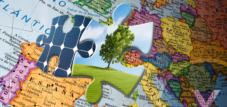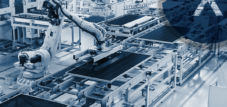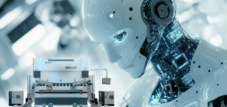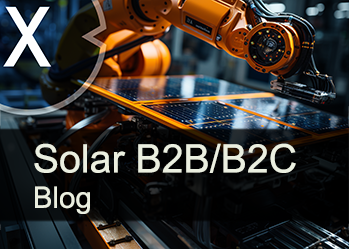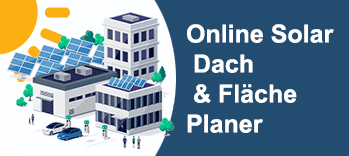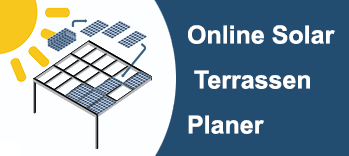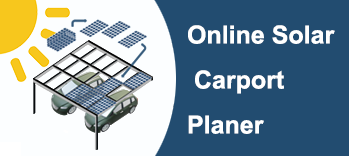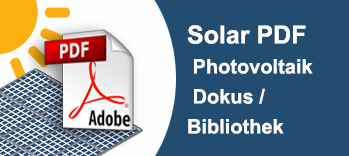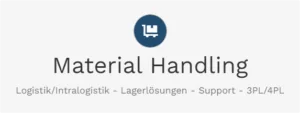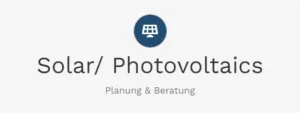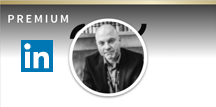Meyer Burger insolvency and the end of the European solar industry – 645 jobs lost
Xpert pre-release
Language selection 📢
Published on: September 18, 2025 / Updated on: September 18, 2025 – Author: Konrad Wolfenstein

Meyer Burger insolvency and the end of the European solar industry – 645 jobs lost – Creative image: Xpert.Digital
Technically three years ahead – and still bankrupt: The tragic story of the solar manufacturer Meyer Burger
### From solar pioneer to bankruptcy: The bitter end of Meyer Burger ### Three years ahead in technology – and still bankrupt: The tragic story of the solar manufacturer Meyer Burger ###
Made in Europe without a chance? How China destroyed German solar hope Meyer Burger
The insolvency of solar module manufacturer Meyer Burger in September 2024 is more than just a corporate bankruptcy; it signals the decline of an entire European industry of the future. The demise of the Swiss technology leader not only results in the loss of 645 jobs in Germany and Switzerland, but also a severe blow to the hopes of an independent, European-based solar industry.
The main reason for the failure was an unequal battle: Meyer Burger, whose state-of-the-art solar modules had a proven technological lead of several years, was unable to withstand the massive price pressure from state-subsidized cheap imports from China. Chinese modules flooded the European market at dumping prices that were even below the manufacturing costs in China—an aggressive strategy to conquer the market.
The collapse of Meyer Burger is symptomatic of a crisis that has gripped the entire continent. While China controls over 95% of global solar production, Europe's share has shrunk to a tiny 3%. This raises existential questions about Europe's strategic dependence, security of supply, and the effectiveness of European industrial policy. While the US has placed a protective hand over its domestic production with the Inflation Reduction Act, Europe acted hesitantly and disunitedly. The Meyer Burger case is thus a chronicle of failure on many levels – technologically brilliant, but economically and politically let down. It serves as a drastic warning of the consequences misguided industrial policy can have for Europe's future.
Suitable for:
Why did Meyer Burger fail?
The insolvency of the Swiss solar module manufacturer Meyer Burger in September 2024 marks the end of a remarkable corporate history. Founded in 1953 by Hans Meyer and Erich Burger as a manufacturer of precision machines for the watch industry, the company has developed over the decades into a technology leader in the photovoltaics sector.
The main reason for the failure was the massive price pressure from cheap Chinese imports. According to the company, dumping prices from China led to an unsustainable economic situation. Chinese solar modules were sold in Europe at prices of just €0.06 per watt, while they were offered on the Chinese domestic market for €0.10 per watt—a clear indication of dumping.
The crisis escalated dramatically in November 2024 when Meyer Burger's largest customer, the American company DE Shaw Renewable Investments (DESRI), terminated a long-term supply contract for up to 5 gigawatts of solar modules. This contract laid the foundation for Meyer Burger's expansion into the USA and was scheduled to be completed between 2024 and 2029.
What was Meyer Burger’s technological uniqueness?
Meyer Burger had established itself as a technology leader in the solar industry, particularly through the development of heterojunction SmartWire technology. This proprietary technology enabled solar modules with significantly higher efficiency than conventional PERC technology.
The SmartWire Connection Technology (SWCT) replaced conventional silver-based busbars with thin copper wires, creating up to 2,000 contact points per solar cell and achieving a 5 percent increase in power output. The Fraunhofer Institute for Solar Energy Systems confirmed in 2020 that Meyer Burger had a three-year technological lead over other manufacturers.
Heterojunction technology was characterized by particularly low temperature coefficients, which led to higher yields in strong sunlight. Furthermore, the modules were more stable in diffuse light and achieved reliable performance even under cloudy skies.
How did the company develop until it went bankrupt?
After decades of operating as a system manufacturer for the solar industry, Meyer Burger decided to enter the production of solar cells and modules itself in 2020. The company acquired the former factories of Sovello in Bitterfeld-Wolfen and SolarWorld in Freiberg.
Production began in Germany in 2021 with the aim of creating a European alternative to Chinese products. At the same time, the company expanded into the USA, where it built a factory in Goodyear, Arizona, which began operations in 2024.
Despite its technological superiority, Meyer Burger was already under considerable financial pressure in 2023. The company recorded an operating loss of 210.4 million Swiss francs in 2024, with sales of only 70 million Swiss francs. At the end of May 2024, Meyer Burger filed for insolvency for its German subsidiaries, followed by the filing in the US at the end of June.
What impact will the closure have on employees?
The closure of Meyer Burger had dramatic consequences for the workforce. In Germany, around 600 employees lost their jobs – about 300 in Bitterfeld-Wolfen (Saxony-Anhalt) and 200 in Hohenstein-Ernstthal (Saxony). In Switzerland, the remaining 45 employees were laid off.
All 282 employees at Goodyear's US site in Arizona had already been laid off in spring 2024. The search for investors was unsuccessful, so insolvency administrators Lucas Flöther and Reinhard Klose saw no alternative to closing the plant.
The affected regions in eastern Germany not only lost jobs, but also important technological know-how. Meyer Burger had invested significantly in its German locations and trained skilled workers there.
What does this mean for the European solar industry?
The collapse of Meyer Burger is symptomatic of the crisis facing the entire European solar industry. Europe now produces only about 3 percent of the world's solar modules, while China controls over 95 percent of global production capacity.
Other German manufacturers are also fighting for survival. Solarwatt ceased production in Dresden in 2024 and relocated manufacturing to Asia. The company justified this with the economic impossibility of producing in Germany under current conditions.
The European Solar Manufacturing Council (ESMC) warns of an existential threat to the European solar industry. Without immediate action, Europe could completely lose its remaining solar manufacturing base and become even more dependent on Chinese imports.
How is the US reacting to this development?
The United States has adopted a different strategy with the Inflation Reduction Act (IRA) of 2022. The law offers extensive tax incentives for domestic solar production, including a 30 percent investment tax credit and additional bonuses for American components.
The 45X Advanced Manufacturing Production Tax Credit directly supports manufacturers based on production volume—4 cents per watt for photovoltaic cells and $12 per square meter for wafers. These incentives have led to a dramatic upswing in American solar manufacturing: production capacity has quadrupled to over 50 gigawatts since 2022.
Meyer Burger had originally hoped to benefit from these American incentives, but the termination of the DESRI contract thwarted these plans. Ironically, Meyer Burger ultimately sold its Arizona production facilities to the Indian manufacturer Waaree Solar Americas.
New: Patent from the USA – Install solar parks up to 30% cheaper and 40% faster and easier – with explanatory videos!

New: Patent from the USA – Install solar parks up to 30% cheaper and 40% faster and easier – with explanatory videos! - Image: Xpert.Digital
At the heart of this technological advancement is the deliberate departure from conventional clamp fastening, which has been the standard for decades. The new, more time- and cost-effective mounting system addresses this with a fundamentally different, more intelligent concept. Instead of clamping the modules at specific points, they are inserted into a continuous, specially shaped support rail and held securely. This design ensures that all forces occurring—be they static loads from snow or dynamic loads from wind—are evenly distributed across the entire length of the module frame.
More about it here:
Net-Zero Industry Act – Europe’s last lifeline for solar?
What is Europe doing to protect its solar industry?
Europe is attempting to counteract this with the Net-Zero Industry Act (NZIA), which came into force in June 2024. The law sets the goal of meeting at least 40 percent of Europe's demand for net-zero technologies through domestic production by 2030.
The NZIA allows Member States to consider non-price criteria such as sustainability and resilience in public procurement, with price differences of up to 20 percent being tolerated in public procurement. At least 30 percent of tenders are to apply these criteria.
Several Member States have already introduced national support programmes: France with the Pacte solaire, Spain with PERTE support, Italy with the Piano Transizione 5.0 and Austria with a Made-in-EU bonus.
Suitable for:
- European solar know-how: Bürkle laminators for the production of solar modules at Meyer Burger | Photovoltaic tips & information
How strongly does China dominate the global market?
China's dominance in the solar sector is overwhelming. The country controls over 80 percent of global photovoltaic production and has built this position through decades of strategic investments. As early as 2022, 87 percent of photovoltaic systems imported into Germany came from China.
In 2024, China exported a total of 236 gigawatts of solar modules, an increase of 13 percent over the previous year. In 2023 alone, China installed 253 gigawatts of solar capacity, accounting for 60 percent of global capacity additions.
The Chinese strategy is based on massive state subsidies, which make it possible to offer solar modules at prices that even Chinese manufacturers cannot profit from. These loss-making operations are offset by state aid and serve the long-term goal of market conquest.
What role did political decisions play?
The political responses in Europe were inadequate and often contradictory. While over 400 European companies, including solar manufacturers, opposed trade defense measures in 2023, others urgently called for punitive tariffs against Chinese dumping practices.
Germany played a particularly problematic role by weakening EU tariffs on Chinese solar modules as early as 2013. This policy of cheap imports significantly accelerated the decline of the European solar industry.
The US, on the other hand, largely blocked Chinese manufacturers' access to the American market, resulting in Chinese overcapacity being diverted to Europe. This further increased price pressure on European manufacturers.
What are the long-term consequences for Europe?
The loss of European solar manufacturing has far-reaching strategic consequences. Europe is becoming even more dependent on Chinese supply chains at a time when geopolitical tensions are rising. This dependence not only jeopardizes security of supply but also the achievement of European climate targets.
The European Union aims to massively expand solar capacity by 2030, but without domestic production, this expansion will depend entirely on Chinese imports. This creates strategic vulnerabilities and makes Europe vulnerable to blackmail.
The loss of technological know-how is perhaps even more serious. Companies like Meyer Burger had built up expertise over decades, which is now being lost. These skills are difficult to rebuild and require significant investment.
Can the remaining European manufacturers survive?
The few remaining European solar manufacturers face enormous challenges. Companies like REC Group, which still produce heterojunction modules, are exposed to the same price pressure as Meyer Burger.
Some manufacturers are trying to save themselves by specializing. The Dutch company Solarge produces lighter solar modules for roofs that cannot support higher weight loads. But even this niche strategy offers only limited protection against Chinese competition.
The European Solar Manufacturing Council estimates that without immediate action, the European solar industry could collapse completely within a few months. This would spell the end of a once-leading European technology sector.
What role do quality and technology play?
Despite the price differences, the quality of Chinese solar modules is comparable to European products. This makes it even more difficult for European manufacturers to justify their higher prices.
Meyer Burger had attempted to differentiate itself through premium quality and innovative technology. Heterojunction SmartWire technology did indeed offer performance advantages, but these were not sufficient to offset the cost disadvantages.
The irony is that many of the technologies used by Chinese manufacturers today were originally developed by European companies like Meyer Burger. Europe has lost its technological innovations to China and is now competing with its own inventions.
What could have been done differently?
In retrospect, it's clear that Europe made strategic errors. The premature lifting of anti-dumping duties in 2013 was a crucial mistake. Instead, Europe should have protected its solar industry more consistently and, at the same time, strengthened its competitiveness.
Earlier and more decisive implementation of the Net-Zero Industry Act might have saved companies like Meyer Burger. The EU measures came too late and were too timid to counter Chinese state subsidies.
With the Inflation Reduction Act, the US demonstrates that a decisive industrial policy can be effective. Europe should have created similar incentives earlier to strengthen its solar industry.
What happens next?
The future of the European solar industry depends on swift and decisive political action. The EU must consistently implement the Net-Zero Industry Act and go beyond current plans. A European Cleantech Fund could mobilize the necessary investments.
At the same time, European companies must develop new business models. Some firms are already cooperating with Chinese partners to jointly build factories in Europe. This strategy is controversial, but it could keep jobs and expertise in Europe.
The danger is that Europe will further increase its dependence on China instead of creating genuine alternatives. The Meyer Burger disaster should serve as a wake-up call before it's too late.
What lessons can other industries learn?
The decline of Meyer Burger and the European solar industry is a lesson in the dangers of unfair international competition. Other industries, such as the electric car industry and battery production, face similar challenges.
The importance of a coherent industrial policy is evident in the solar energy example. While the US and China act strategically, Europe often reacts too late and in an uncoordinated manner. This leads to the loss of entire industries and strategic autonomy.
The Meyer Burger insolvency also demonstrates that technological superiority alone is not enough if the framework conditions are right. Innovation must be supported by appropriate policy and market instruments to survive against subsidized competition.
The Meyer Burger case marks the end of an era in the European solar industry. What began as a success story of Swiss precision engineering ended as a victim of global trade policy and Chinese state subsidies. The lessons from this failure could be crucial for whether Europe can maintain its industrial base in other future technologies.
Look, this little detail saves up to 40% installation time and costs up to 30% less. It's from the USA and patented.

NEW: ready -to -mount solar systems! This patented innovation accelerates your solar construction massively
The heart of ModuRack 's innovation is its departure from conventional clamp fastening. Instead of clamps, the modules are inserted and held in place by a continuous support rail.
More about it here:
Your partner for business development in the field of photovoltaics and construction
From industrial roof PV to solar parks to larger solar parking spaces
☑️ Our business language is English or German
☑️ NEW: Correspondence in your national language!
I would be happy to serve you and my team as a personal advisor.
You can contact me by filling out the contact form or simply call me on +49 89 89 674 804 (Munich) . My email address is: wolfenstein ∂ xpert.digital
I'm looking forward to our joint project.







